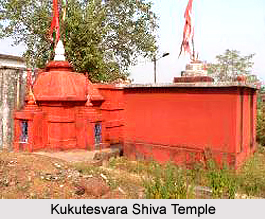 The Kukutesvara Shiva Temple also known as Kukutesvara Temple is age old Shaivite temple located Bhubaneshwar, referred to as the Temple City of India in the state of Orsissa. Like most of the temples of Orissa, Kukutesvara Shiva Temple is a juxtaposition of cultural heritage and traditions, art and architecture.
The Kukutesvara Shiva Temple also known as Kukutesvara Temple is age old Shaivite temple located Bhubaneshwar, referred to as the Temple City of India in the state of Orsissa. Like most of the temples of Orissa, Kukutesvara Shiva Temple is a juxtaposition of cultural heritage and traditions, art and architecture.
History of Kukutesvara Shiva Temple
Kukutesvara Shiva temple, an illustration of the rich historical background of the state, was erected during the reign of the Somavamsi Dynasty, approximately dating back to 975-1000 CE. During that period the monarchs in a way to exemplify their devotion and idolatry towards their respective deities, constructed temples and pilgrimage centres.
Architecture of Kukutesvara Shiva Temple
Kukutesvara Shiva temple, dating back to thousand years, is positioned in the Tinimundia chowk, in the old part of the city. The shrine, facing the eastern side, enshrines its presiding deity Lord Shiva in the form of a Shivalingam within on a circular yonipitha facing the northern side. Kukutesvara Shiva temple at Orissa represents one of the best specimens of Kalinga School of architecture. Fine grained ochreous sand stone has been predominantly used for the construction of the temple. The temple confirms to the dry masonry type of architectural pattern.
The vimana or the chief sanctum of the temple is square in shape measuring 2.1 metres long and it is 3.8 metres high. The beautifully adorned peripheral jagamohana i.e. entrance hallway is of contemporary design. It is rectangular in shape with sides measuring 42.6 metres and 26.0 metres.
The door leading to the sanctum sanctorum or garbhagriha of the temple is situated on the eastern side measuring 1.16 metres in height and 0.5 metres in width. Magnificently carved images of navagrahas seated on a lotus mark the decor of the door lintel. The other three sides of the vimana feature the parsadevata rahas (niches).
A four armed image of Lord Ganesha has been installed in the southern raha. The idol is seen holding in his upper right arm a japamala i.e. prayer beads; in the upper left arm a laddu and a knife in the lower left arm. In the western raha an image of Lord Kartikeya holding a trident and a knife in his upper arms and resting his other arm on a peacock, his mount. His lower right arm is in varada mudra.
The final raha on the northern side is dedicated to Lord Shiva`s holy consort, Parvati, contemporary in design. Presently, the temple is being managed by the priests. Festivals such as Sankranti, Shivaratri and abhisheka are some of the vital festivals celebrated by the temple authorities on a grand scale with great enthusiasm and gusto, attracting hordes of pilgrims from different places.





















